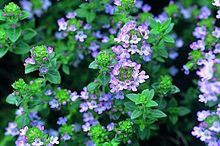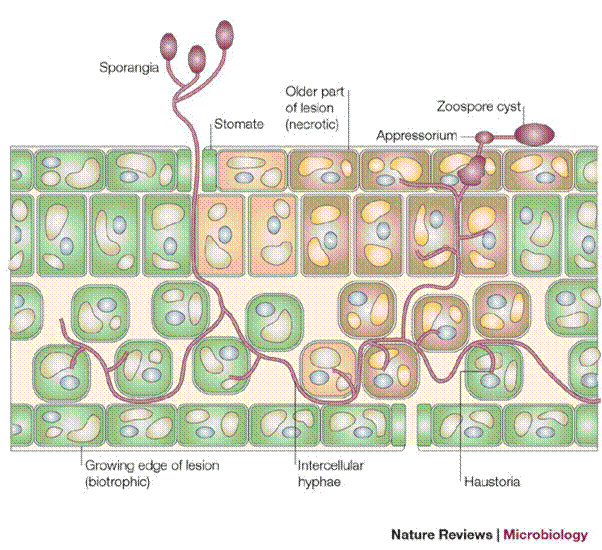Monday, 28 September 2015
Tuesday, 22 September 2015
Hepatitis D
Hepatitis D, also referred to as hepatitis D virus (HDV) and classified as Hepatitis delta virus, is a disease caused by a small circular enveloped RNA virus. It is one of five known hepatitis viruses: A, B, C, D, and E. HDV is considered to be a subviral satellite because it can propagate only in the presence of the hepatitis B virus (HBV).[1] Transmission of HDV can occur either via simultaneous infection with HBV (coinfection) or superimposed on chronic hepatitis B or hepatitis B carrier state (superinfection).
Both superinfection and coinfection with HDV results in more severe complications compared to infection with HBV alone. These complications include a greater likelihood of experiencing liver failure in acute infections and a rapid progression to liver cirrhosis, with an increased chance of developing liver cancer in chronic infections.
Thursday, 10 September 2015
Foot and Mouth disease

Ruptured oral blister in diseased cow.
FOOT and MOUTH disease in cattle
Foot-and-mouth disease or hoof-and-mouth disease (Aphthae epizooticae) is an infectious and sometimes fatal viral disease that affectscloven-hoofed animals, including domestic and wild bovids.[1][2] The virus causes a high fever for two or three days, followed by blisters inside the mouth and on the feet that may rupture and cause lameness.
Foot-and-mouth disease (FMD) has severe implications for animal farming, since it is highly infectious and can be spread by infected animals throughaerosols, through contact with contaminated farming equipment, vehicles, clothing, or feed, and by domestic and wild predators.[3] Its containment demands considerable efforts in vaccination, strict monitoring, trade restrictions, and quarantines, and occasionally the killing of animals.

Medicinal plants -- carotenoids
The carotenoids in primroseproduce bright red, yellow and orange shades. People consuming diets rich in carotenoids from natural foods, such as fruits and vegetables, are healthier and have lower mortality from a number ofchronic illnesses

https://en.wikipedia.org/wiki/Medicinal_plants

https://en.wikipedia.org/wiki/Medicinal_plants
Medicinal plants -- thyme
The essential oil of common thyme(Thymus vulgaris), contains 20-54%thymol.[17] Thymol, is a powerfulantiseptic and antifungal that is used in a variety of products.[18] Before the advent of modern antibiotics, oil of thyme was used to medicate bandages.[19][20] Thymol is also used to treat respiratory infections. A tea made by infusing the herb in water can be used for coughs and bronchitis.

https://en.wikipedia.org/wiki/Medicinal_plants

https://en.wikipedia.org/wiki/Medicinal_plants
Medicinal plants -- willow trees

The bark of willow trees contains large amounts of salicylic acid, which is the active metabolite of aspirin. Willow bark has been used for millennia as an effective pain reliever and feverreducer
https://en.wikipedia.org/wiki/Medicinal_plants
Monday, 7 September 2015
Botany first year Chapter 6 Q&A sample
|
1.
|
What is a
bacterium?
|
(02) marks
|
|
ANSWER
|
Bacteria
constitute a large domain of prokaryotic microorganisms. Typically a few
micrometres in length, bacteria have a number of shapes, ranging from spheres
to rods and spirals. Bacteria were among the first life forms to appear on
Earth, and are present in most of its habitats. Bacteria inhabit soil, water,
acidic hot springs, radioactive waste, and the deep portions of Earth's
crust. Bacteria also live in symbiotic and parasitic relationships with
plants and animals. They are also known to have flourished in manned
spacecraft.
Bacteria
are vital in recycling nutrients, with many of the stages in nutrient cycles
dependent on these organisms, such as the fixation of nitrogen from the
atmosphere and putrefaction. In the biological communities surrounding
hydrothermal vents and cold seeps, bacteria provide the nutrients needed to
sustain life by converting dissolved compounds, such as hydrogen sulphide and
methane, to energy.
|
|
|
2.
|
Write the
structural components of the bacterium cell with a diagram?
|
(07) marks
|
|
ANSWER
|
In
most bacteria, a cell wall is present on the outside of the cell membrane.
The cell membrane and cell wall comprise the cell envelope. A common
bacterial cell wall material is peptidoglycan, which is made from
polysaccharide chains cross-linked by peptides. Bacterial cell walls are
different from the cell walls of plants and fungi, which are made of cellulose
and chitin, respectively. The cell wall of bacteria is also distinct from
that of Archaea, which do not contain peptidoglycan. The cell wall is
essential to the survival of many bacteria, and the antibiotic penicillin is
able to kill bacteria by inhibiting a step in the synthesis of peptidoglycan.
Flagella are rigid protein structures, about 20 nanometres in diameter and up
to 20 micrometres in length, that are used for motility. Flagella are driven
by the energy released by the transfer of ions down an electrochemical gradient
across the cell membrane. Fimbriae
(sometimes called "attachment pili") are fine filaments of protein,
usually 2–10 nanometres in diameter and up to several micrometers in length.
They are distributed over the surface of the cell, and resemble fine hairs
when seen under the electron microscope. Fimbriae are believed to be involved
in attachment to solid surfaces or to other cells, and are essential for the
virulence of some bacterial pathogens. Pili (sing. pilus) are cellular
appendages, slightly larger than fimbriae, that can transfer genetic material
between bacterial cells in a process called conjugation where they are called
conjugation pili or "sex pili". Most bacteria have a single
circular chromosome that can range in size from only 160,000 base pairs in
the endosymbiotic bacteria Candidatus Carsonella ruddii, to 12,200,000 base
pairs in the soil-dwelling bacteria Sorangium cellulosum. Spirochaetes of the
genus Borrelia are a notable exception to this arrangement, with bacteria
such as Borrelia burgdorferi, the cause of Lyme disease, containing a single
linear chromosome. The genes in bacterial genomes are usually a single
continuous stretch of DNA and although several different types of introns do
exist in bacteria, these are much more rare than in eukaryotes. Bacteria may
also contain plasmids, which are small extra-chromosomal DNAs that may
contain genes for antibiotic resistance or virulence factors. Plasmids
replicate independently of chromosomes, so it is possible that plasmids could
be lost in bacterial cell division. Against this possibility is the fact that
a single bacterium can contain hundreds of copies of a single plasmid.
|
|
|
3.
|
What are the types
of nutrition in bacteria?
|
(02) marks
|
|
ANSWER
|
Bacteria
exhibit an extremely wide variety of metabolic types. The distribution of
metabolic traits within a group of bacteria has traditionally been used to
define their taxonomy, but these traits often do not correspond with modern
genetic classifications. Bacterial metabolism is classified into nutritional
groups on the basis of three major criteria: the kind of energy used for
growth, the source of carbon, and the electron donors used for growth. An
additional criterion of respiratory microorganisms are the electron acceptors
used for aerobic or anaerobic respiration.
Carbon
metabolism in bacteria is either heterotrophic, where organic carbon
compounds are used as carbon sources, or autotrophic, meaning that cellular
carbon is obtained by fixing carbon dioxide. Heterotrophic bacteria include
parasitic types. Typical autotrophic bacteria are phototrophic cyanobacteria,
green sulfur-bacteria and some purple bacteria, but also many
chemolithotrophic species, such as nitrifying or sulfur-oxidising bacteria.
Energy metabolism of bacteria is either based on phototrophy, the use of
light through photosynthesis, or based on chemotrophy, the use of chemical
substances for energy, which are mostly oxidised at the expense of oxygen or
alternative electron acceptors (aerobic/anaerobic respiration).
|
|
|
4.
|
How do bacteria
reproduce?
|
(02) marks
|
|
ANSWER
|
Bacteria
are single celled microbes. The cell structure is simpler than that of other
organisms as there is no nucleus or membrane bound organelles. Instead their
control centre containing the genetic information is contained in a single
loop of DNA. Some bacteria have an extra circle of genetic material called a
plasmid. The plasmid often contains genes that give the bacterium some
advantage over other bacteria. For example it may contain a gene that makes
the bacterium resistant to a certain antibiotic. Some bacteria can form endospores.
These are dormant structures, which are extremely resistant to hostile
physical and chemical conditions such as heat, UV radiation and
disinfectants. This makes destroying them very difficult. Many
endospore-producing bacteria are nasty pathogens, for example Bacillus
anthracis is the cause of anthrax.
|
|
|
5.
|
What is the
importance and control of bacteria?
|
(07) marks
|
|
ANSWER
|
The
economic importance of bacteria derives from the fact that bacteria are
exploited by humans in a number of beneficial ways. Despite the fact that
some bacteria play harmful roles, such as causing disease and spoiling food,
the economic importance of bacteria includes both their useful and harmful
aspects. Biotechnology and bacteria:
Industrial microbiology is defined as the use of micro organism such as
bacteria, fungi and algae for the manufacturing and services industries.
These include-: Fermentation processes, such as brewing, baking, cheese and
butter manufacturing, Bacteria, often Lactobacillus in combination with
yeasts and fungi, have been used for thousands of years in the preparation of
fermented foods such as cheese, pickles, soy sauce, sauerkraut, vinegar,
wine, and yogurt. Chemical manufacturing such as ethanol, acetone, organic
acid, enzymes, perfumes etc. In the chemical industry, bacteria are most
important in the production of enantiomerically pure chemicals for use as
pharmaceuticals or agrochemicals. Genetic engineering is the manipulation of
genes. It is also called recombinant DNA technology. In genetic engineering,
pieces of DNA (genes) are introduced into a host by means of a carrier
(vector) system. The foreign DNA becomes a permanent feature of the host,
being replicated and passed on to daughter cells along with the rest of its
DNA. Bacterial cells are transformed and used in production of commercially
important products. The examples are production of human insulin (used
against diabetes), human growth hormone (somatotrophin used to treat
pituitary dwarfism), and infections which can be used to help fight viral
diseases. Using biotechnology techniques, or bio medical technology bacteria
can also be bioengineered for the production of therapeutic proteins. Fibre
retting- Bacterial populations, especially that of are used to separate
fibres of jute, hemp, flax, etc., the plants are immersed in water and when
they swell, inoculated with bacteria which hydrolyze pectic substance of the
cell walls and separate the fibres. These separated fibres are used to make
ropes and sacks. Digestion- Some bacteria living in the gut of cattle, horses
and other herbivores secrete cellulase, an enzyme that helps in the digestion
of the cellulose contents of plant cell walls. Cellulose is the major source
of energy for these animals. Generally plant cells contain cellulose. The bacteria
present in the stomach of cattle will help in the digestion of cellulose. Vitamin
synthesis- Escherichia coli that lives in the human large intestine
synthesize vitamin B and releases it for human use. Similarly, Clostridium
butyclicum is used for commercial preparation of riboflavin, and vitamin B.
Pest control- Bacteria can also be used in the place of pesticides in the
biological pest control. This commonly uses Bacillus thuringiensis (also
called BT), a Gram-positive, soil dwelling bacterium. This bacteria is used
as a Lepidopteran-specific insecticide under trade names such as Dipel and
Thuricide. Because of their specificity, these pesticides are regarded as
Environmentally friendly, with little or no effect on humans, wildlife,
pollinators, and most other beneficial insects.
|
|
|
6.
|
What are
cyano-bacteria?
|
(07) marks
|
|
ANSWER
|
Cyanobacteria,
also known as Cyanophyta, is a phylum of bacteria that obtain their energy
through photosynthesis. The name "cyanobacteria" comes from the
color of the bacteria. They are often called blue-green algae (but some
consider that name a misnomer, as cyanobacteria are prokaryotic and algae
should be eukaryotic although other definitions of algae encompass prokaryotic
organisms).
By
producing gaseous oxygen as a byproduct of photosynthesis, cyanobacteria are
thought to have converted the early reducing atmosphere into an oxidizing
one, causing the "rusting of the Earth" and dramatically changing
the composition of life forms on Earth by stimulating biodiversity and
leading to the near-extinction of oxygen-intolerant organisms. According to
endosymbiotic theory, the chloroplasts found in plants and eukaryotic algae
evolved from cyanobacterial ancestors via endosymbiosis.
Cyanobacteria
are a photosynthetic nitrogen fixing group that survive in wide variety of
habitats, soils, and water. Their thalli vary from unicellular to filamentous
and filamentous heterocystous. They fix atmospheric nitrogen in aerobic
conditions by heterocyst, specialized cells, and in anaerobic conditions.
Cyanobacteria
include unicellular and colonial species. Colonies may form filaments,
sheets, or even hollow balls. Some filamentous colonies show the ability to
differentiate into several different cell types: vegetative cells, the
normal, photosynthetic cells that are formed under favorable growing
conditions; akinetes, the climate-resistant spores that may form when
environmental conditions become harsh; and thick-walled heterocysts, which
contain the enzyme nitrogenase, vital for nitrogen fixation. Heterocysts may
also form under the appropriate environmental conditions (anoxic) when fixed
nitrogen is scarce. Heterocyst-forming species are specialized for nitrogen
fixation and are able to fix nitrogen gas into ammonia (NH3), which can be
absorbed by plants and converted to protein and nucleic acids (atmospheric
nitrogen is not bioavailable to plants, except for those having endosymbiotic
nitrogen-fixing bacteria, especially the Fabaceae family, among others). Rice
plantations use healthy populations of nitrogen-fixing cyanobacteria
(Anabaena, as symbiotes of the aquatic fern Azolla) for use as rice paddy
fertilizer. Free-living cyanobacteria are present in the water column in rice
paddies, and cyanobacteria can be found growing as epiphytes on the surfaces
of the green alga, Chara, where they may fix nitrogen.
Many
cyanobacteria form motile filaments of cells, called hormogonia, that travel
away from the main biomass to bud and form new colonies elsewhere. The cells
in a hormogonium are often thinner than in the vegetative state, and the
cells on either end of the motile chain may be tapered. To break away from
the parent colony, a hormogonium often must tear apart a weaker cell in a
filament, called a necridium. Each individual cell of a cyanobacterium
typically has a thick, gelatinous cell wall. They lack flagella, but
hormogonia of some species can move about by gliding along surfaces. Many of
the multicellular filamentous forms of Oscillatoria are capable of a waving
motion; the filament oscillates back and forth. In water columns, some
cyanobacteria float by forming gas vesicles, as in archaea. These vesicles
are not organelles as such. They are not bounded by lipid membranes, but by a
protein sheath. Some of these organisms contribute significantly to global
ecology and the oxygen cycle. The tiny marine cyanobacterium Prochlorococcus
was discovered in 1986 and accounts for more than half of the photosynthesis
of the open ocean. Many cyanobacteria even display the circadian rhythms that
were once thought to exist only in eukaryotic cells (see bacterial circadian
rhythms).
|
|
Subscribe to:
Comments (Atom)












































